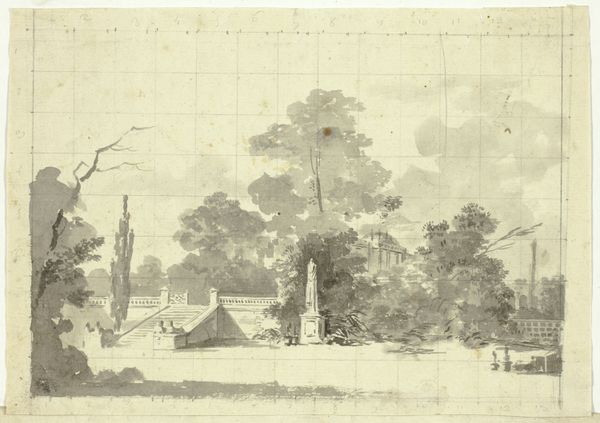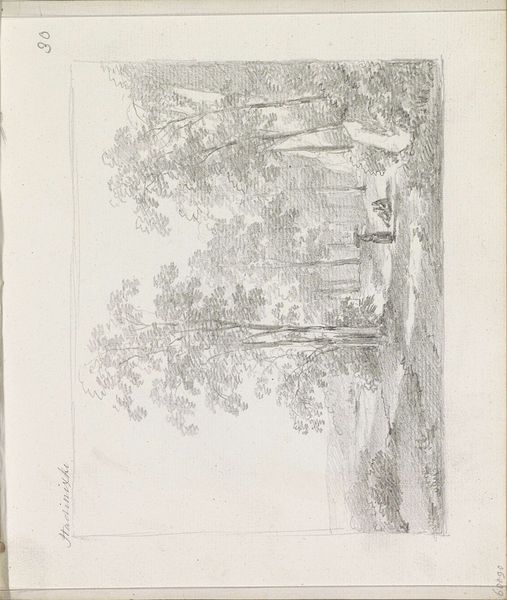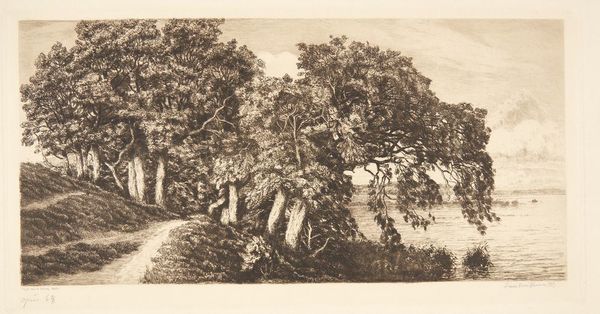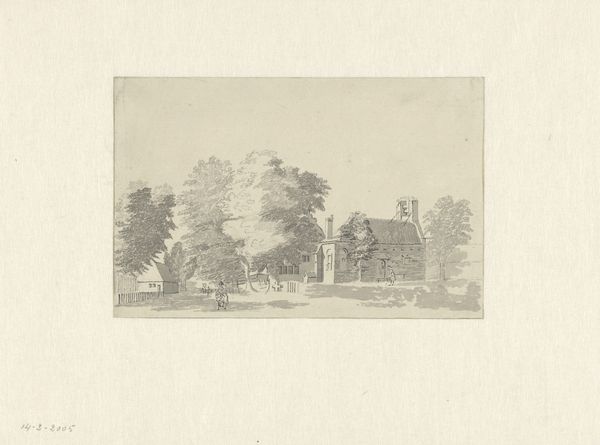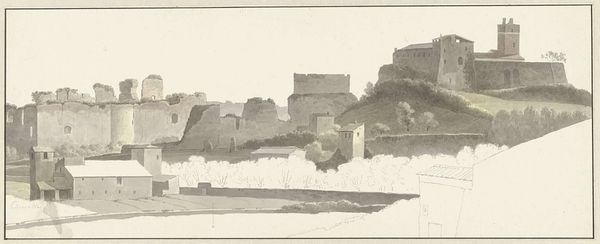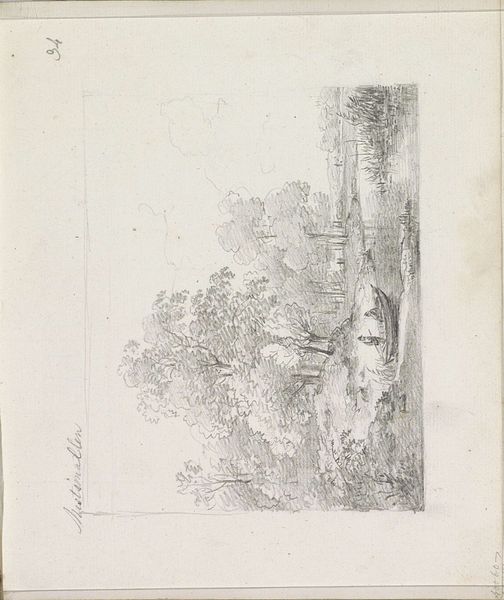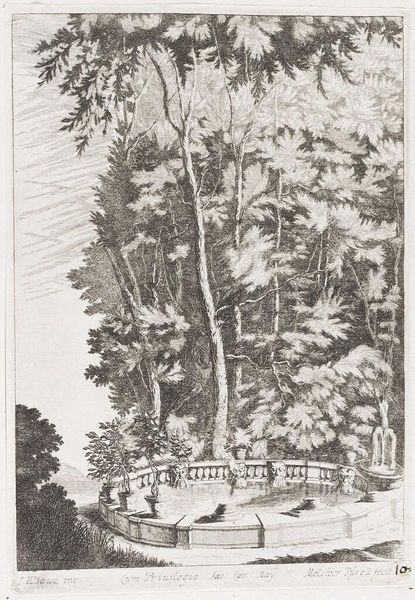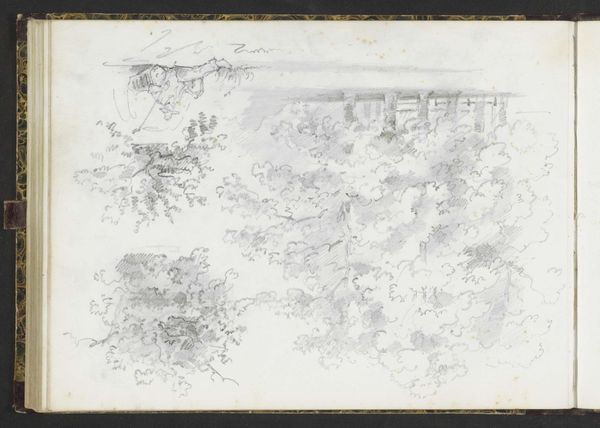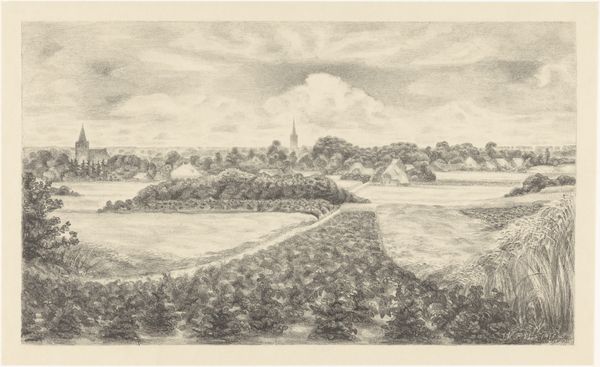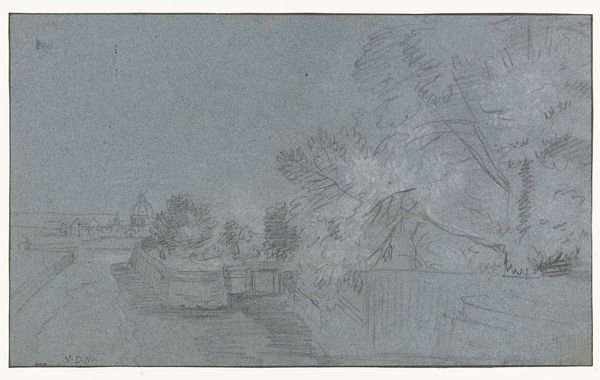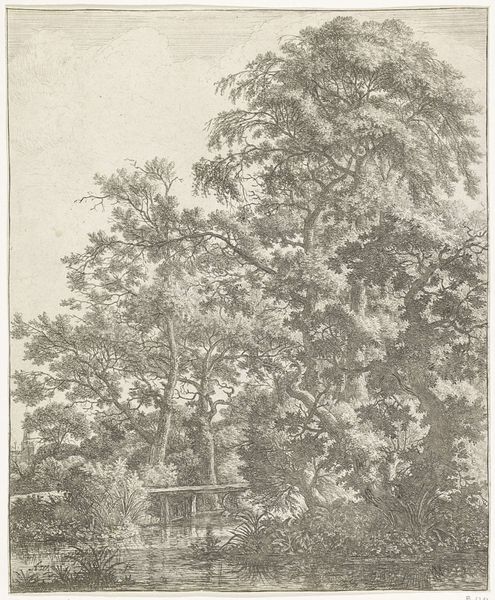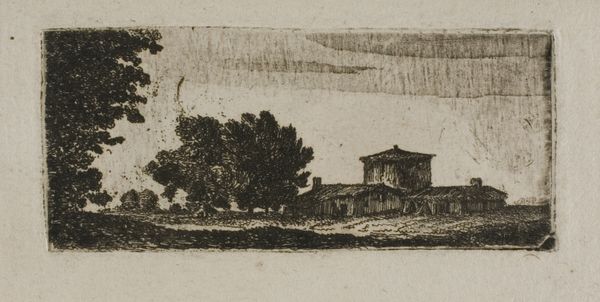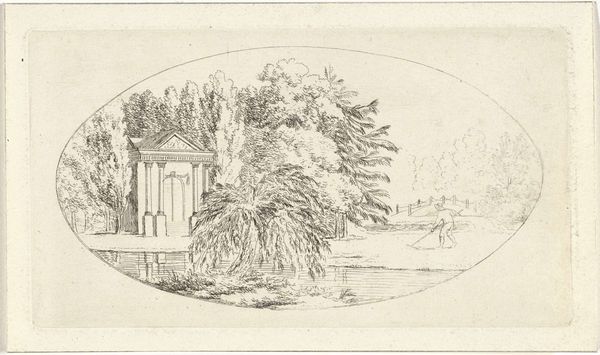
print, etching
# print
#
etching
#
landscape
#
geometric
Copyright: National Gallery of Art: CC0 1.0
Editor: We're looking at Leonard Lehrer's "St. James Park," created in 1972. It's an etching, giving it this interesting textural quality. I am immediately struck by how the rigid geometry of the trees contrasts with their almost cloud-like canopies, like artificial nature. What can you tell us about this work? Curator: Focusing on the materials and process reveals a tension between control and accident inherent in etching. Consider the labour involved in acid-etching the plate and then printing it repeatedly. Does that reproductive quality democratize art, or cheapen the creative gesture? Also, look closely – what commentary might Lehrer be offering on landscape as a social construct? Editor: I see what you mean about the social aspect! How the 'natural' is sculpted to fit particular aesthetics... What do you think that sculpture in the park is made of? Is it important? Curator: It's definitely part of the story, right? Etching as a process facilitates the reproduction of such sculptures, enabling wider access to these signifiers of class and taste. Perhaps Lehrer is encouraging us to reflect on the availability and valuation of cultural capital. Do you see something in that? Editor: Yeah, I can definitely see how the material qualities tie into broader social meanings. The etching allows for the mass reproduction of what was once the privilege of a wealthy person! Curator: Exactly! And understanding those systems of production and consumption helps unpack the cultural power at play. It really makes you rethink the park itself, doesn't it? Editor: It does! I didn't even think of it that way. I now see beyond just pretty shapes. Thank you.
Comments
No comments
Be the first to comment and join the conversation on the ultimate creative platform.

